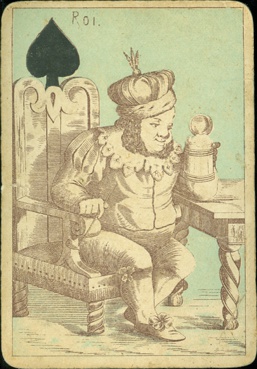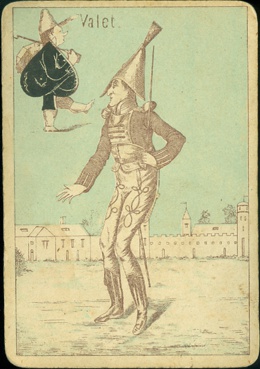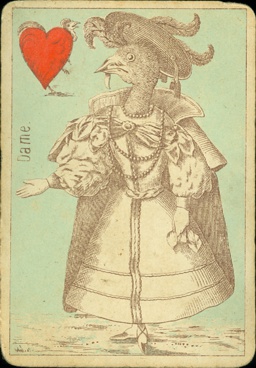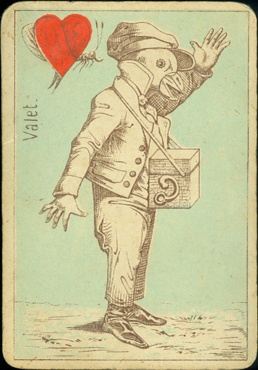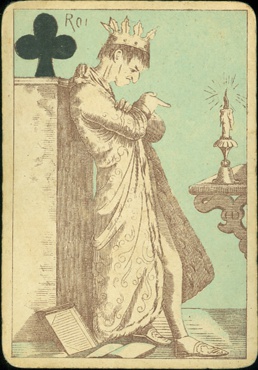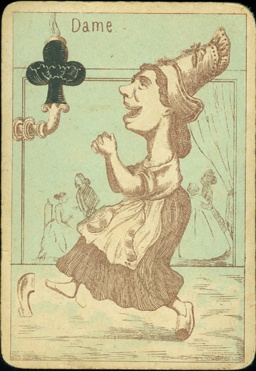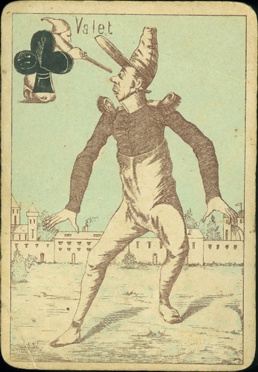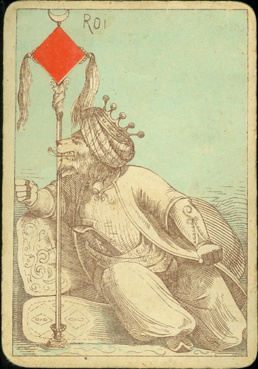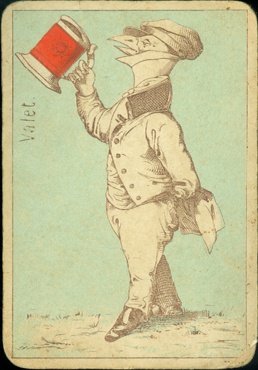October
2017
|

|
|
|
There was
only one so-called "Luikse" market that Joop visited this
month. Offered goods were okay, only a few stalls with vintage clothing,
otherwise anything between junk and antique. So there were collectable
items for everybody.... except for those looking for playing cards. |
It doesn't
happen very often, fortunately, but this time he came home empty handed.
Still, when the real world doesn't deliver the goods, there's always the
internet and this month the Dutch auction sites and the French and
German Ebay had many interesting decks to offer. |
So there
was a constant flow of packages in the direction of our mailbox this month and
Miriam had a hard time keeping up with her administration. Usually a large offer
of interesting decks makes our choice for this spot more difficult, but this
month the decision was already made halfway October. There was only one deck
that came close and that was the non-standard Osram advertising deck by the
Vereinigte Stralsunder Spielkartenfabriken AG from around 1930. But there were
other decks that should be mentioned here, like a German deck with Parisian aces
by Frommann & Morian from around 1900 or a rare Italian, photographic
souvenir deck from around 1910 with different Italian kings, queens and rulers,
who helped building the Italian unity, on the courts. And we shouldn't forget
the All British deck, that was printed by Alf Cooke and published by the FDB in
Denmark in 1933. But.... when there's a transformation deck, even a very used
one, there's hardly any competition possible.
The manufacturer
of this transformation deck is de facto unknown. The deck is mentioned in Albert
Field's book about Transformation Playing Cards as "An anonymous Belgian
pack" (#36, p. 95) and in his description he writes that "it seems to
have been published by Daveluy in Bruges". Field dates the deck as 1873.
 |
The
authors of the outstanding Belgian book about the Daveluy company have
decided to show this deck too (#24, p.163/164). Their decision was based
on that one line in Albert Field's description, although with the
necessary reservation: "Albert Field adjudged the deck to Daveluy,
why is unclear, thus doubts remain. According to some people it was due
to the back design, which is said to be undoubtedly by Daveluy. Backs,
however, do not give proof. During the 19th century, the print mold of
back designs was offered by specialized firms as clichés, such as
capitals, initials or illustrations. Hence the use of identical back
patterns by many card makers: they bought their clichés from the same
supplier". |
|
In this book the authors don't
give an exact year, but they date it 1860 - 1885. |
The authors of the
Daveluy book are Alex Claes, Filip Cremer, Luc Biebouw en Yvette Smet and we
know Alex, Luc and Yvette as serious collectors and researchers. Filip Cremer
is the head of the Belgian National Playing Card Museum and has a broad
knowledge of Belgian playing cards. We too have seen similar back designs used
in packs by different makers, so we know that their doubt about using a back
design to identify the manufacturer is valid. We guess that they also
didn't know how Mr. Field came to date the deck so exact as 1873, as they
propose the above 25 year period.
Well, Daveluy or an unknown maker, it doesn't really matter. We enjoy the
designs just as much. And here's your chance...........
Both the Daveluy
book and Albert Field's book mention that the designs of the pip cards were based
on earlier German transformation cards that were published as sheets by Braun &
Schneider in 1852. We have the Braun & Schneider deck, cut from those
sheets (Dutch version), so we'll show a few of the identical cards. The designs of the
all pip cards are copied from the Braun & Schneider transformation cards, but of
the courts only the KS and KC are exact copies of the B&S cards. The KH here
above is a mirrored version of the KH by B&S, but the head was changed to
that of a goat. Same on the KD, where the image was exactly copied, but the head was changed to that of a lion.
Both are shown here below. However, the queens and jacks are
original designs. In the red suits the queens and jacks have bird heads. In
the Daveluy book a comparison is made with the work of Jean-Jacques Grandville
(1803-1847), probably based on his "Les Metamorphoses du jour", a
series of 70 scenes in which human figures with heads of different animals were
placed -in a comical way- in a daily situation.
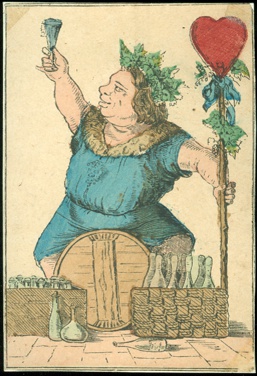
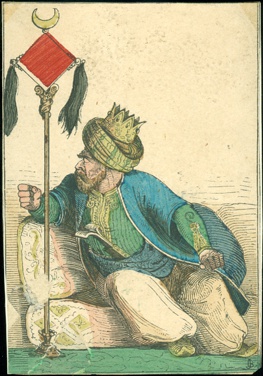
|
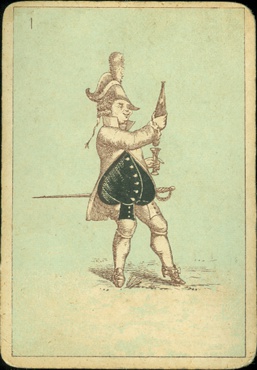
design is same as B&S.
|
CLICK ANY ACE TO SEE THE PIP CARDS. |
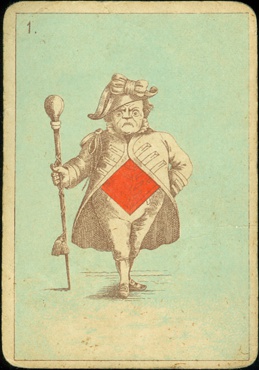
design is same as B&S.
|
|
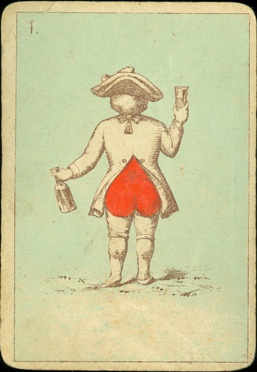
|

|
|
|
We haven't been able to trace these 2 aces, any suggestions are
welcome. |
|
Courts in the red
suits are humanized animals, in the black suits they are human. Large pips on
the courts have a small design on the queens and jacks only.
BACK
TO PRESENT MONTH


